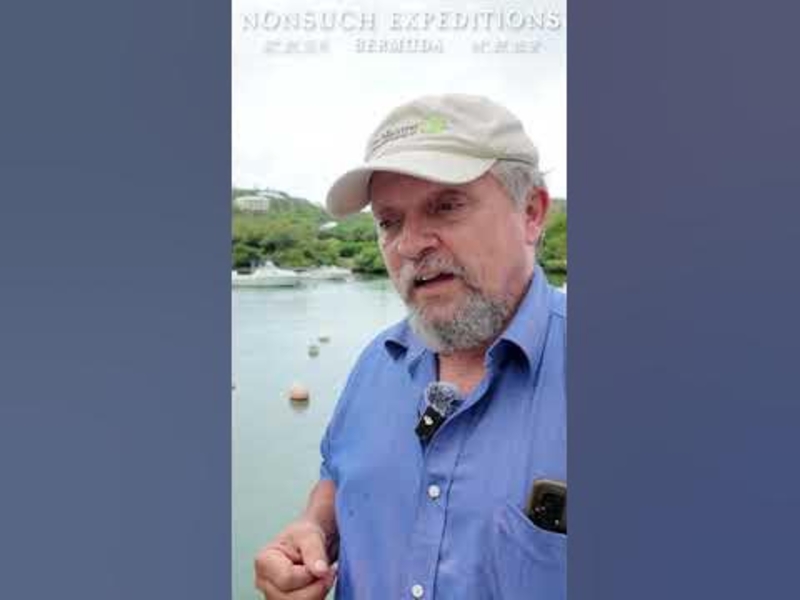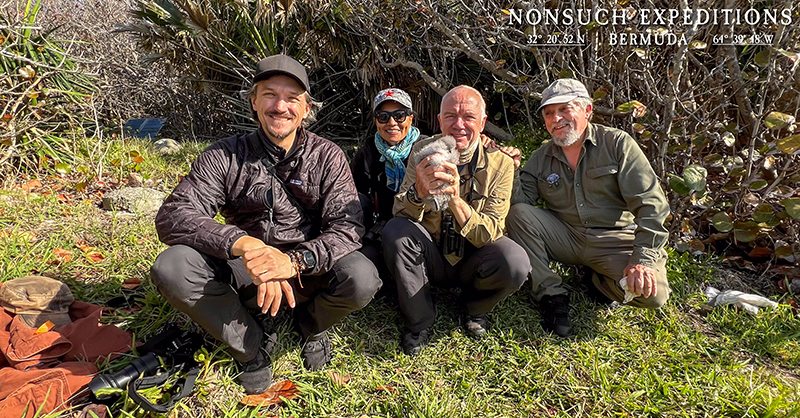Nonsuch Expeditions Receives $25K Award
The Mohamed bin Zayed Species Conservation Fund [MBZF] has awarded Nonsuch Expeditions a $25,000 Chairman’s Award for their ongoing work on Nonsuch Island including conserving the endangered Bermuda petrel.
A spokesperson said, “At the wrap up of another record-breaking nesting season for the critically endangered, red-listed Bermuda petrel, the Mohamed bin Zayed Species Conservation Fund has awarded a special Chairman’s Award in support of the Nonsuch Expeditions ongoing conservation efforts with the Bermuda Government’s Department of the Environment and Natural Resources [DENR] on Nonsuch Island, Bermuda.
“The fund supports boots-on-the-ground, get-your-hands-dirty conservation of threatened species worldwide, with particular focus on lesser-known species that may not receive widespread conservation attention. It provides hundreds of smaller grants per year directly to those doing important fieldwork, of which a handful are selected each year for the prestigious Chairman’s Award as being representative of significant conservation efforts worldwide.”
Nicolas Heard, Acting Director General, Mohamed bin Zayed Species Conservation Fund, said, “This particular project, supported by Dolphin Energy, was selected for the Chairman’s Award by the members of MBZ Fund Advisory Board on the basis of its ambitiously realistic conservation objectives applied to a critically threatened species, the Bermuda Petrel, and its associated nesting habitat.”
The spokesperson said, “For the past 17 years, the Nonsuch Expeditions have supported, participated in, and showcased the DENR’s conservation efforts on and around Nonsuch Island including work with the critically endangered, endemic Bermuda petrel. Also known as the cahow it was thought to be extinct for over 330 years until 17 pairs were discovered nesting on remote rocks in Castle Harbour in the 1950s. Thanks to a pioneering recovery program initiated by Dr. David Wingate, followed by a groundbreaking translocation project launched by his successor Jeremy Madeiros, they are as of this year back up to 165 pairs.
“JP Rouja, founder and Cahow champion for the Nonsuch Expeditions, directly assists the Warden Jeremy Madeiros and provides conservation technology and media support for the programs. Additionally, the team looks for conservation challenges that the island and its various species and programs are facing that can be solved by technology, collaborates with global partners to source and deploy solutions, and develops novel custom technologies when necessary.
“One of the signature projects is the decade+ long CahowCam project, which enables anyone from around the world to tune in to watch the nesting activities of cahows unfold via the custom built CahowCam livestreaming video cameras set up in the underground burrows. Not only do the CahowCams open the world of the cahow to Bermudians, children, and civil society – it also allows for increased scientific understanding of the birds from 24/7 observations of their nesting habits, and the crowd sourcing of observation and data collection.
“The MBZF Fund Chairman’s Award is accompanied by a $25,000 grant, supported by Dolphin Energy, which will assist the signature CahowCam project, and boost the Nonsuch Expeditions other ongoing projects, but most importantly, it is hoped that the international recognition will attract further international support, as these efforts are currently underfunded.
“Some of this ongoing work includes:
- Following on from producing the reference genome of the Cahow with local partner BioQuest [a Bermuda based NGO, leveraging genomics for conservation] in 2023, the grant will allow the team to initiate the first phase of a follow-on genomic population study of the Cahow, which will greatly enhance the management of the species.
- The ongoing maintenance, and installation of an AI powered, rodent detecting camera trap platform on Nonsuch Island that was installed in 2023 with technical support from the Nature Conservancy, with the AI being trained to identifying rodents which are a massive threat to nesting Cahows and Nonsuch biodiversity overall. These traps capture thousands of images on the island which are uploaded to the cloud where a custom AI is being trained to determine if rats have been detected, allowing for quick response to protect the nesting sites of the vulnerable birds.
- The funding will also support the installation of a new batch of artificial Cahow burrows. These are each made up of 600-800 lbs of concrete, which is traditionally mixed by hand then carried in buckets to the remote islands, which the grant will help accelerate through the use of a barge to produce a first batch.
- It will also help support the ongoing production of short-form videos shot weekly throughout the nesting season that are used for education and global public outreach.
“To learn more, watch the LiveStreams and follow the project please visit the website, Instagram, and LinkedIn.”
Read More About
Category: All, Environment, News





